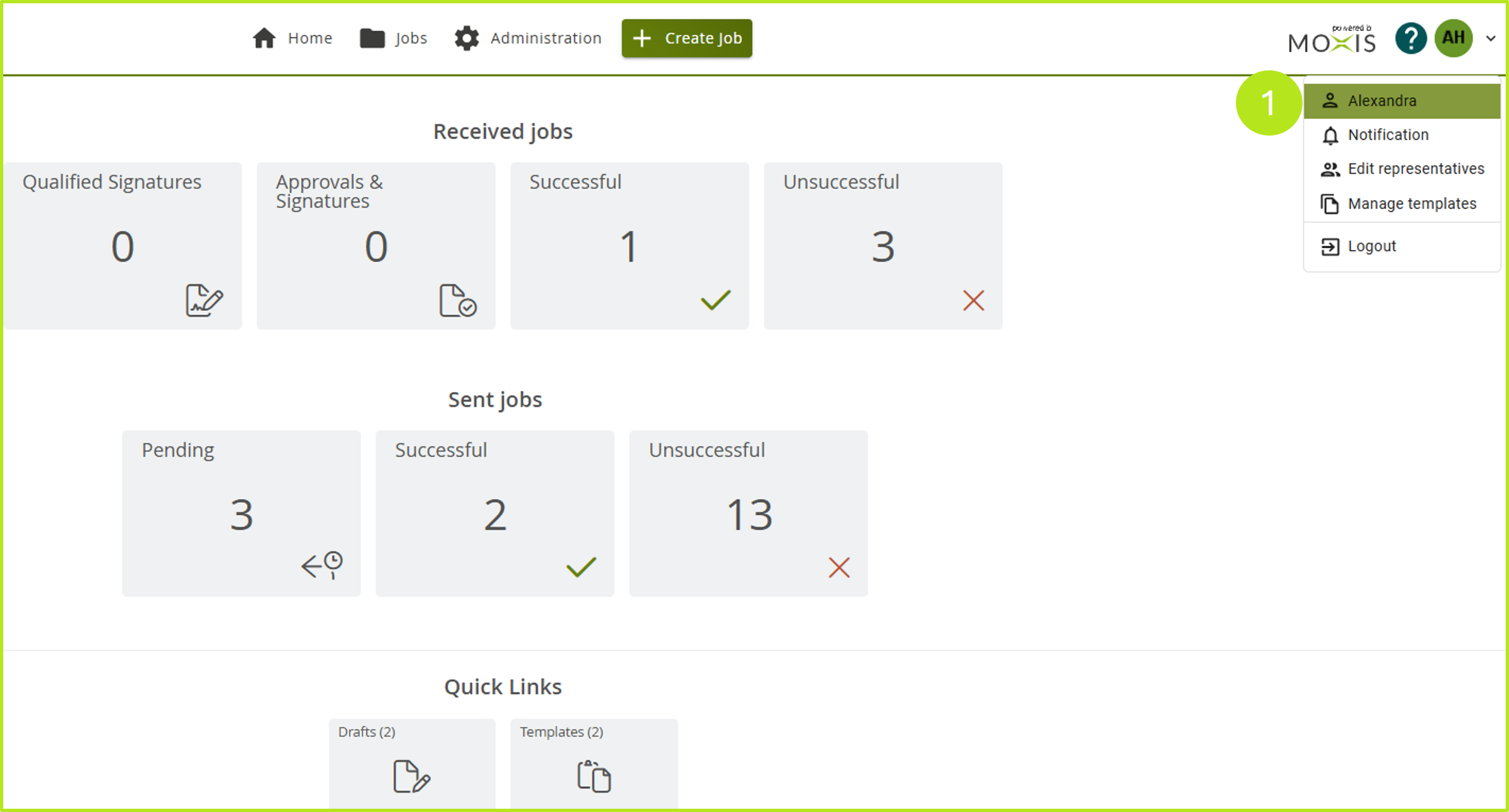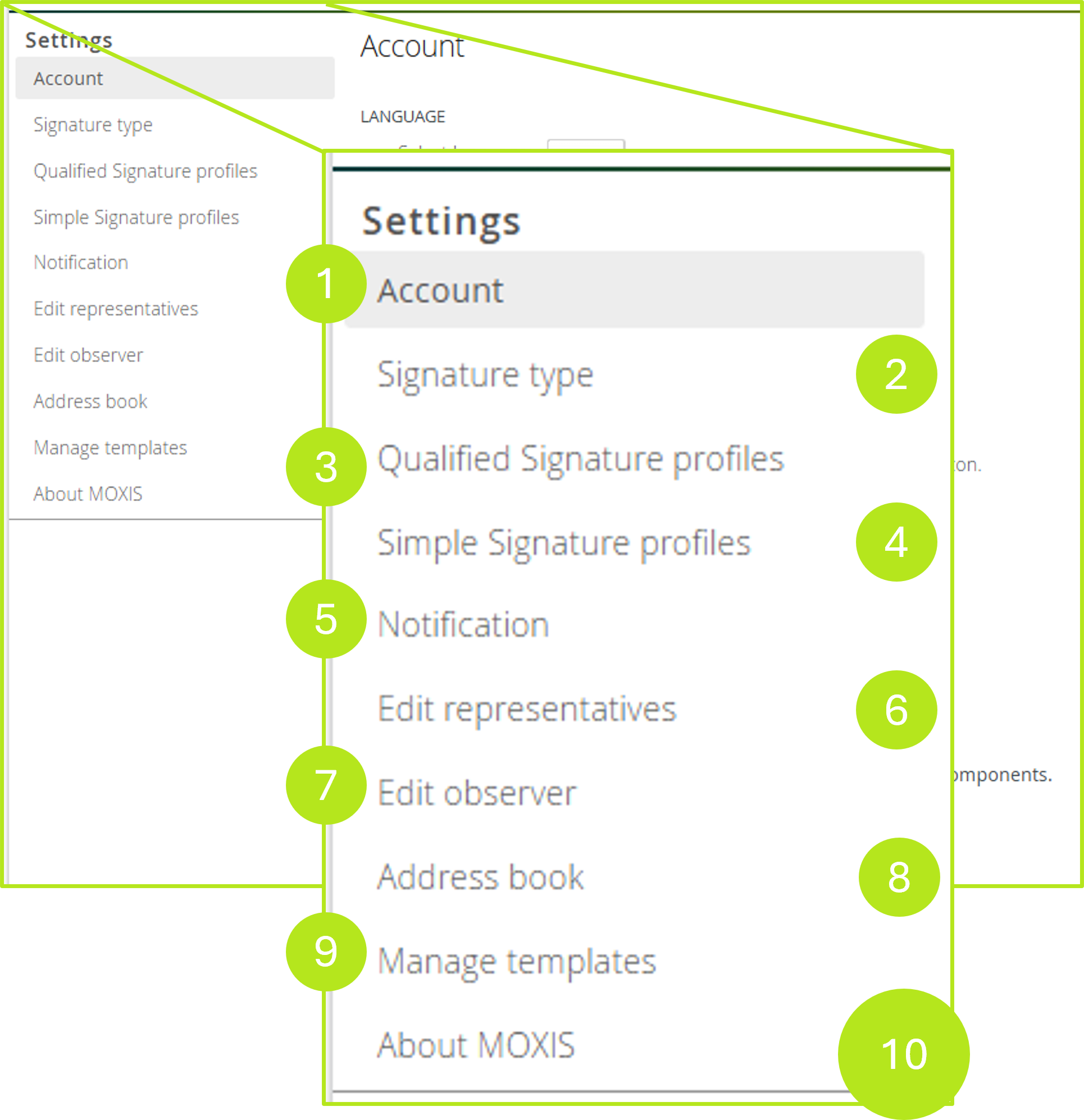[v4.50] Personal Settings in MOXIS
Contents
The personal settings in MOXIS allow you to edit your own account and also (depending on the rights granted to you by your administrator) to use various features in MOXIS. In our example, we assume that you have full rights.
This article gives you an overview of the editing options available to you in the personal settings. Further links allow you to delve deeper into the topic if necessary.
1. Personal settings overview
1.1. Opening personal settings
To open your personal settings, please click on the user icon in the top right corner (see figure 1 [1]).

Figure 1: Open personal settings in MOXIS
1.2 Personal settings overview
The following is a brief description of the options available to you in the personal settings (see figure 2 [1]-[10]).
(1) Account: Here you can change your account settings.
(2) Signature type: The Signature Type tab allows you to store various settings for your preferred trust centres.
(3) Qualified Signatures profiles: This is where you can create profiles and define rules for qualified signatures. This saves time and optimises your processes.
(4) Simple Signature profiles: Here you have the option to create profiles for simple signatures. This saves time and optimises your processes.
(5) Notification: Under the Notifications tab, you define the notification settings for your processes and general settings for notifications.
(6) Edit representatives: Here you can define a substitution and determine which notifications the substitution will receive.
(7) Edit oberver: Use this tab to add a viewer.
(8) Address book: This is where you will find the address books for external users and groups.
(9) Manage templates: This tab allows you to manage templates that you have created or that have been shared with you.
(10) About MOXIS: This menu item provides you with information about MOXIS, such as the current version number.
XiTip
The following presonal settings are optional and must be configured by your administrator if you would like to use them.
(11) Generate placeholders: In this tab, you can generate either a group placeholder or a personal placeholder.
(12) Personal encryption: Here you have the option to create a personal key that is protected by a password.

Figure 2: Overview of the settings in MOXIS
